Abit AT8: µGuru comes to the RD480
by Gary Key on March 10, 2006 12:05 AM EST- Posted in
- Motherboards
Audio Performance
The Realtek ALC-882D HD audio codec was tested with the recently released 1.31 driver set. The Realtek DirectSound audio drivers do not support more than 32 hardware buffers and the OpenAL 1.1 drivers do not support more than 30 hardware buffers at this time, so the scores cannot be directly compared to the HDA Mystique 7.1 and Creative Labs Sound Blaster X-FI cards in the benchmarks. The Realtek OpenAL 1.1 driver increases CPU utilization up to 21% more than the Realtek DirectSound drivers in the 3D tests.
However, if you are a serious gamer, then a dedicated sound card is still a requirement to ensure consistent frame rate averages across a wide variety of games. We noticed in previous testing of our Battlefield 2 and Half Life 2 benchmarks, the Realtek HD audio codec would cause stuttering in intensive scenes. The 1.31 driver release has now eliminated all stuttering in our current benchmarks while improving performance across the board except in Serious Sam II. We did not notice the same performance degradation in Serious Sam II with the 1.31 driver set and the Realtek ALC-882 codec on the Intel chipset boards. We are still investigating this issue.
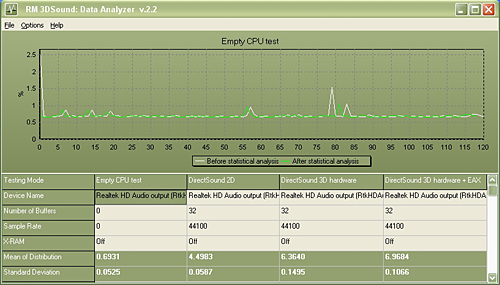
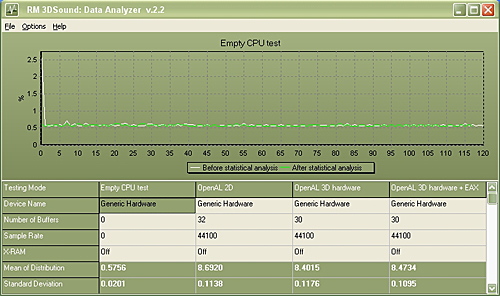
The Realtek ALC-882D HD audio codec was tested with the recently released 1.31 driver set. The Realtek DirectSound audio drivers do not support more than 32 hardware buffers and the OpenAL 1.1 drivers do not support more than 30 hardware buffers at this time, so the scores cannot be directly compared to the HDA Mystique 7.1 and Creative Labs Sound Blaster X-FI cards in the benchmarks. The Realtek OpenAL 1.1 driver increases CPU utilization up to 21% more than the Realtek DirectSound drivers in the 3D tests.
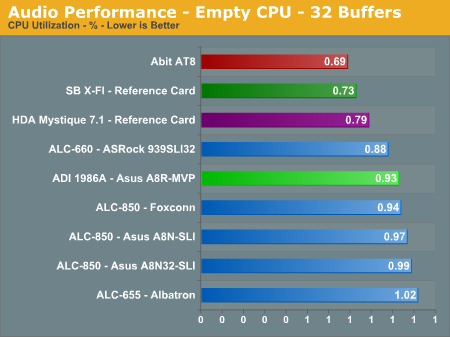
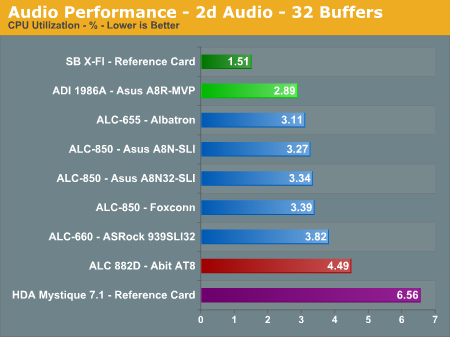

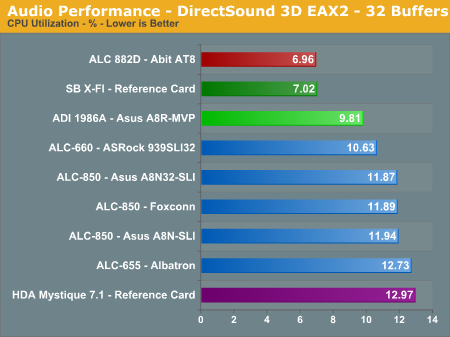
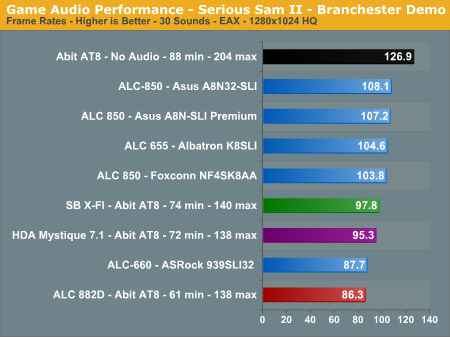
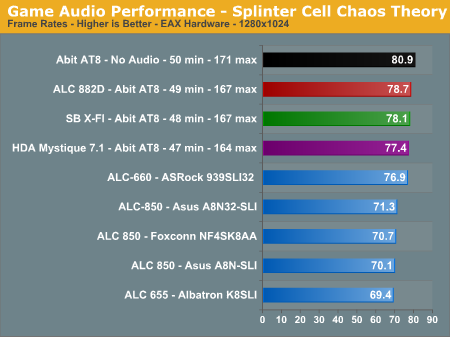

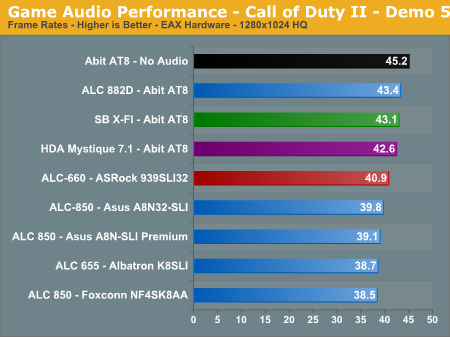
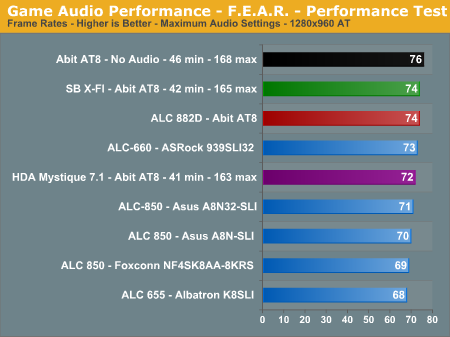
However, if you are a serious gamer, then a dedicated sound card is still a requirement to ensure consistent frame rate averages across a wide variety of games. We noticed in previous testing of our Battlefield 2 and Half Life 2 benchmarks, the Realtek HD audio codec would cause stuttering in intensive scenes. The 1.31 driver release has now eliminated all stuttering in our current benchmarks while improving performance across the board except in Serious Sam II. We did not notice the same performance degradation in Serious Sam II with the 1.31 driver set and the Realtek ALC-882 codec on the Intel chipset boards. We are still investigating this issue.










42 Comments
View All Comments
Gary Key - Friday, March 10, 2006 - link
Abit plans on this board becoming a value performance leader with the AT8-32x being slightly more upscale in the price range. We will be reviewing this board once it is available. However, given the current price range of the RD580 boards, the RD480 boards are the better value at this time given the incremental performance differences of the RD580 (although this would be my personal choice).
There have been some growing pains with the ATI chipsets but there were also growing pains with the NVIDIA/SIS/VIA/ULi/ALI/Intel/etc. chipsets at product launches also. :) Overall, both the ATI RD480 and RD580 are very good chipsets, the fact the SB600 Southbridge was not available in time for either product launch is where I think ATI failed. This forced the board suppliers to utilize a Southbridge solution (ULi M1575) that was not designed in conjunction with the RD480/580 Northbridge. While it is an excellent Southbridge solution, some of the storage access and timing issues that have been reported and now solved, were not seen on the few SB450 equipped boards. I personally expect the ATI equipped boards to mature quickly and provide an excellent competitive alternative to the nForce boards. This is good for all of us.
n7 - Friday, March 10, 2006 - link
Even with the OCing issues, this is still a far better value Crossfire choice for anyone than the craptastic A8R-MVP